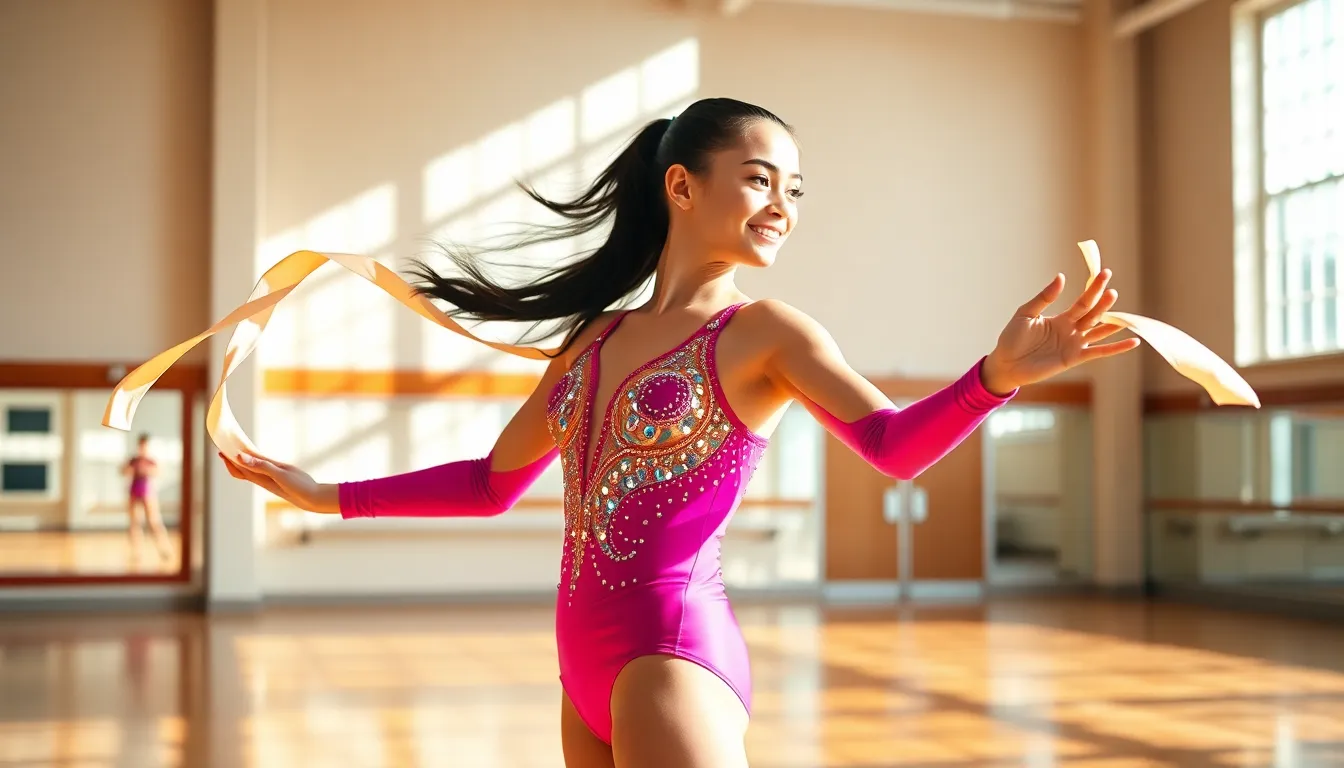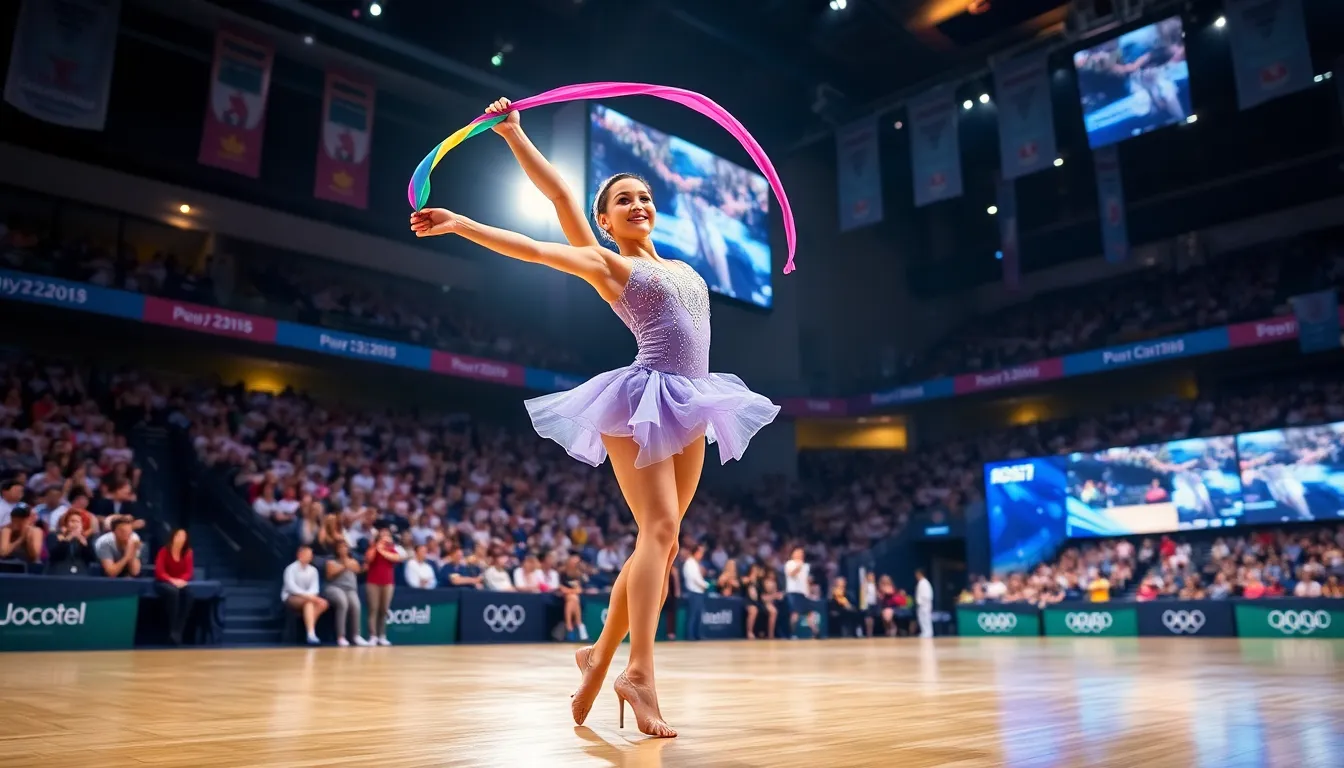Table of Contents
ToggleRhythmic gymnastics, a captivating blend of artistry and athleticism, has been gaining significant attention in the sports world. Combining elements of ballet, dance, and gymnastics with the use of colorful apparatuses, this unique sport showcases the grace and strength of its athletes. In this text, we will investigate into the essence of rhythmic gymnastics, explore its latest trends, and understand how technology is changing the game.
Understanding Rhythmic Gymnastics

Rhythmic gymnastics is a discipline that integrates gymnastics with dance, primarily performed by women, although the sport has been evolving to include male participants as well. This sport is distinctive for its use of various apparatuses, including ribbons, hoops, balls, clubs, and ropes.
History and Evolution of the Sport
Rhythmic gymnastics made its debut in the 19th century in Europe, initially influenced by the work of figures such as Greek gymnast and educator, Friedrich Ludwig Jahn. The sport gained momentum through the 1900s, particularly after being included in the Olympic Games for women in 1984. Since then, it has continuously evolved, incorporating modern techniques and artistic styles, allowing athletes to express themselves uniquely.
Key Elements of Rhythmic Gymnastics
The core elements of rhythmic gymnastics revolve around flexibility, coordination, and grace. During routines, athletes must seamlessly integrate their movements with music while skillfully manipulating their apparatus. Judges evaluate performances based on a combination of technical difficulty, artistry, and execution, making each routine a work of art. Notably, rhythm and synchronization are paramount, as they capture the audience and enhance the overall performance.
Importance of Music and Choreography
Music is the heartbeat of rhythmic gymnastics, setting the tone and pace for each performance. The choice of music significantly influences both the emotional connection and the innovation of the routine. Athletes often select pieces that complement their style and highlight their strengths. Choreography plays a crucial role, too, with movements designed to tell a story or evoke a certain feeling. The interplay between music and choreography is what transforms a technical display into a sensational performance, making the athlete’s interpretation vital to their success.
Recent Trends in Rhythmic Gymnastics
In recent years, rhythmic gymnastics has witnessed a surge in popularity, thanks to the rise of social media and increased visibility on global platforms. This sport has evolved beyond traditional norms, embracing contemporary influences and fostering a global community.
Notable Athletes in Recent Competitions
Athletes like Dina Averina and Aleksandra Soldatova have made headlines with their breathtaking performances, setting new standards for technical execution and artistry. Their ability to combine athletic prowess with captivating choreography has earned them accolades at various international competitions.
Insights from Major Tournaments
Recent competitions, such as the World Championships and the European Championships, have showcased a remarkable shift towards innovation. Athletes are now incorporating more complex apparatus routines, challenging the boundaries of what is possible in the sport. Also, the role of teamwork and group performances has expanded, highlighting the importance of collaboration in rhythmic gymnastics.
The Role of Technology in Training and Performance
Technology is revolutionizing how athletes prepare for rhythmic gymnastics, providing advanced tools for training and performance analysis. Coaches now use video analysis and motion tracking software to assess techniques, allowing for immediate feedback and adjustments, thereby enhancing training efficacy.
Future of Rhythmic Gymnastics
The future of rhythmic gymnastics looks promising as new training methodologies and analytics tools emerge. The sport is expected to become increasingly inclusive, fostering diverse talents from around the world. With ongoing innovation, athletes may soon explore augmented reality training that combines physical practice with virtual feedback.
How to Get Involved in the Sport
Joining the rhythmic gymnastics community can start at any age, with many local clubs offering classes for beginners. Aspiring gymnasts can benefit from investing in proper training and understanding the importance of equipment. Participating in workshops and competitions can also nurture skills and build confidence, making it a rewarding experience for enthusiasts.
Conclusion
Rhythmic gymnastics stands as a testament to the blend of art and sport, captivating audiences with its grace and complexity. As the discipline continues to evolve, fueled by technological innovation and the dedication of its athletes, it is poised to inspire future generations. With opportunities for participation at various levels, rhythmic gymnastics invites everyone to appreciate its beauty and intricacies.




